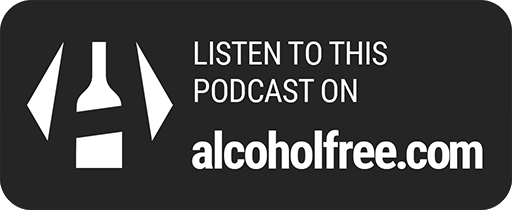Casey Grover, MD, FACEP

Casey Grover, MD, FACEP, FASAM
Fentanyl High: A Teen Filmmaker's Fight Against the Opioid Crisis
Fentanyl High: A Teen Filmmaker's Fight Against the Opioid Crisis
Fentanyl High: A Teen Filmmaker's Fight Against the Opioid Crisis
Monday 19th May 2025
Explore how Kyle Santoro's documentary 'Fentanyl High' is changing conversations about teen substance abuse and opioid addiction.
43 minutes
Inspiring
Informative
Hopeful
Compassionate
Supportive
About this podcast
Author:
Casey Grover, MD, FACEP
Overview:
Categories:
Innovative Treatments & Recovery Paths
Navigating Alcohol Dependency
Family Recovery from Addiction
Navigating Intimate Relationships
Nutritional Pathways to Recovery
Links:
Visit site
Episodes:
151 (View all)

Do you want to link to this podcast?
Get the buttons here!Teen Filmmaker Takes on Fentanyl Crisis with Bold Documentary
Episode Overview
- Kyle Santoro's documentary aims to educate teens about substance abuse.
- Film screenings involve community collaboration and resource distribution.
- 'Fentanyl High' uses peer-to-peer education to break stigma.
- Participants in the documentary have achieved sobriety.
- Open dialogue is crucial in addressing teen addiction.
"Using filmmaking as a tool, we can inspire change and create spaces for real conversations about addiction."
In this engaging episode of 'Addiction Medicine Made Easy', Dr Casey Grover welcomes Kyle Santoro, a young filmmaker with a mission. At just 19, Kyle has created a documentary titled 'Fentanyl High' that takes a deep dive into the teenage psyche and their relationship with substance abuse. Inspired by his own high school experiences, Kyle uses his film to shed light on the often-ignored topic of teen drug use, particularly focusing on the potent opioid, fentanyl.
Kyle shares his journey from witnessing overdoses at his high school to crafting a documentary that aims to educate peers and break the stigma surrounding addiction. The conversation between Kyle and Dr Grover explores the various pressures teenagers face – from academic stress to peer influences – that can lead them down the path of substance abuse. The episode highlights Kyle's peer-to-peer approach, which provides a safe space for teens to discuss their struggles openly, fostering understanding and support.
This method has proven to be therapeutic for many involved in the project, with some participants achieving sobriety through the process. Dr Grover and Kyle also discuss the broader impact of 'Fentanyl High', from film screenings that involve local communities to collaborations with government agencies and non-profits. These screenings aim to raise awareness and distribute life-saving resources like naloxone. If you're curious about how a teenager is tackling the opioid crisis head-on, this episode is a must-listen.
It offers hope and insights into the power of community and the importance of open dialogue in addressing substance abuse among teens.
